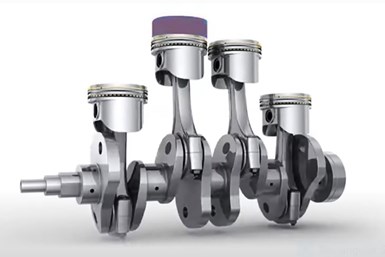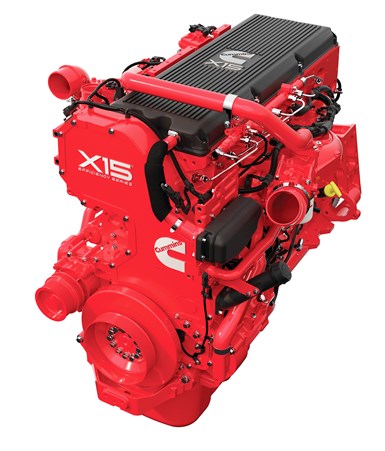Cylinder Deactivation Can Benefit Diesels Too
In this case, it’s mostly about reducing emissions—but fuel economy gains still add up.
#economics
Cylinder deactivation controls, which turn off a fixed number of cylinders when an engine is operating at low loads, boost fuel efficiency by minimizing pumping losses in gasoline engines.

Tula Technologies’ “dynamic skip fire” software individually controls each cylinder to precisely match engine output to torque requests. (Image: Tula)
A more sophisticated version of the technology debuted last year in the Chevrolet Silverado and GMC Sierra full-size pickup trucks powered by 5.3- and 6.2-liter V-8s. Several other General Motors trucks are adding the technology this year.
Developed by Silicon Valley startup Tula Technologies, the system controls each cylinder individually to more precisely match engine output with torque requests. This can provide fuel efficiency gains of 7%-15% over a standard engine, which is about twice the improvement gained by current two-mode deactivation systems.
Reducing Diesel Emissions
Diesel engines already are much more efficient than gasoline mills, thus they don’t benefit as much from a fuel consumption standpoint by applying cylinder deactivation.
However, Tula says its system, which it calls Dynamic Skip Fire (DSF), can significantly reduce nitrogen oxide tailpipe emissions in diesels independently of efficiency gains.

Tula is testing its cylinder deactivation technology in a 15-liter Cummins diesel engine. (Image: Cummins)
In simulation tests with a 15-liter 6-cylinder Cummins X15 diesel, technology showed NOx reductions of 45%-65% on EPA drive cycles. Fuel consumption and corresponding carbon dioxide reductions were 1%-4%.
The NOx reduction is achieved by optimizing exhaust temperature control. Diesel exhaust aftertreatment systems function best at about 400°F. Performance decreases at lower temperatures common to unthrottled engines running at low loads.
Tula’s system allows the remaining cylinders to run at near full throttle—and at a much lower air-fuel ratio—while others are deactivated. This can boost exhaust temperatures by as much as 200°F, which allows the catalyst to stay lit and treat NOx emissions.
What’s Next?
Tula and Cummins plan to continue testing the technology to ensure it can meet durability, reliability and cost targets for commercial applications. The companies also are working to minimize NVH issues.
The initial focus is on heavy-duty trucks. In addition to helping vehicles meet more stringent emissions requirements due in California in 2024, Tula points out that even modest fuel efficiency gains can reap huge benefits for long-haul trucks. It calculates that a semi using the technology could save $1,800 per year in fuel costs.
Tula, which is financially backed by GM and Delphi, also sees potential applications for the system in diesel-powered light trucks. It says the technology is applicable to any size or type of engine.
The company, which holds more than 140 patents related to DSF and has another 120 pending, also is developing applications for small gasoline engines (4- and 3-cylinder mills), including teaming the technology with mild-hybrid systems to help smooth torque. Further out is a “dynamic motor drive” for electric vehicles that incorporates some of the same control principles used with DSF to improve the efficiency of electric motors.
RELATED CONTENT
-
Report Forecasts Huge Economic Upside for Self-Driving EVs
Widespread adoption of autonomous electric vehicles could provide $800 billion in annual social and economic benefits in the U.S. by 2050, according to a new report.
-
All About the 2018 Honda Accord
The common wisdom seems to be that midsize cars have pretty much had it in the U.S. new car market.
-
MTU Research to Boost Fuel Economy ~20%
Researchers are using V2X communications and other methods to provide vehicles with a significant increase in fuel economy.

